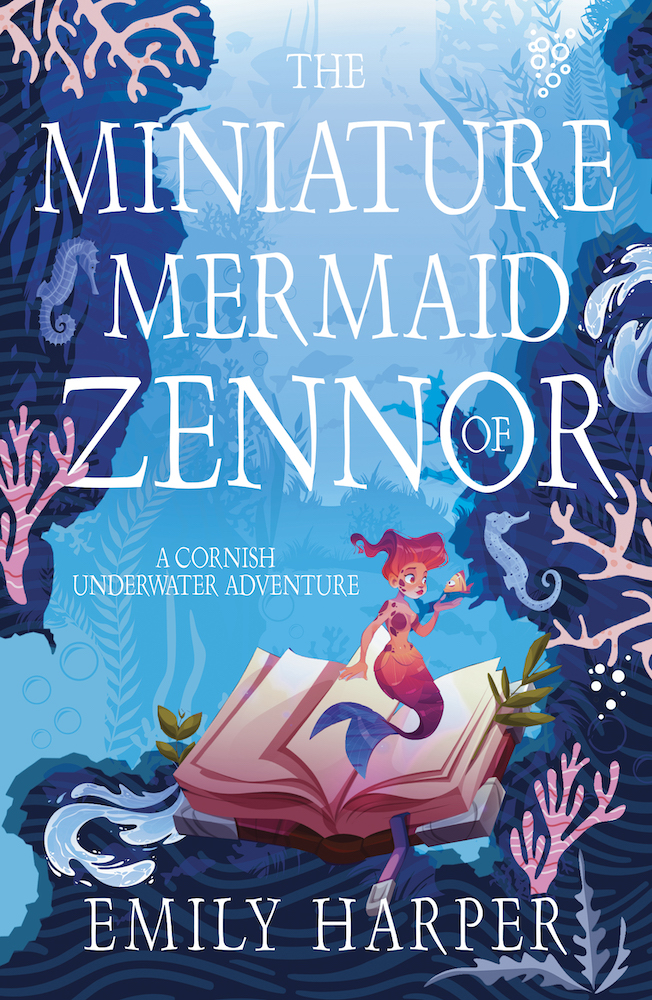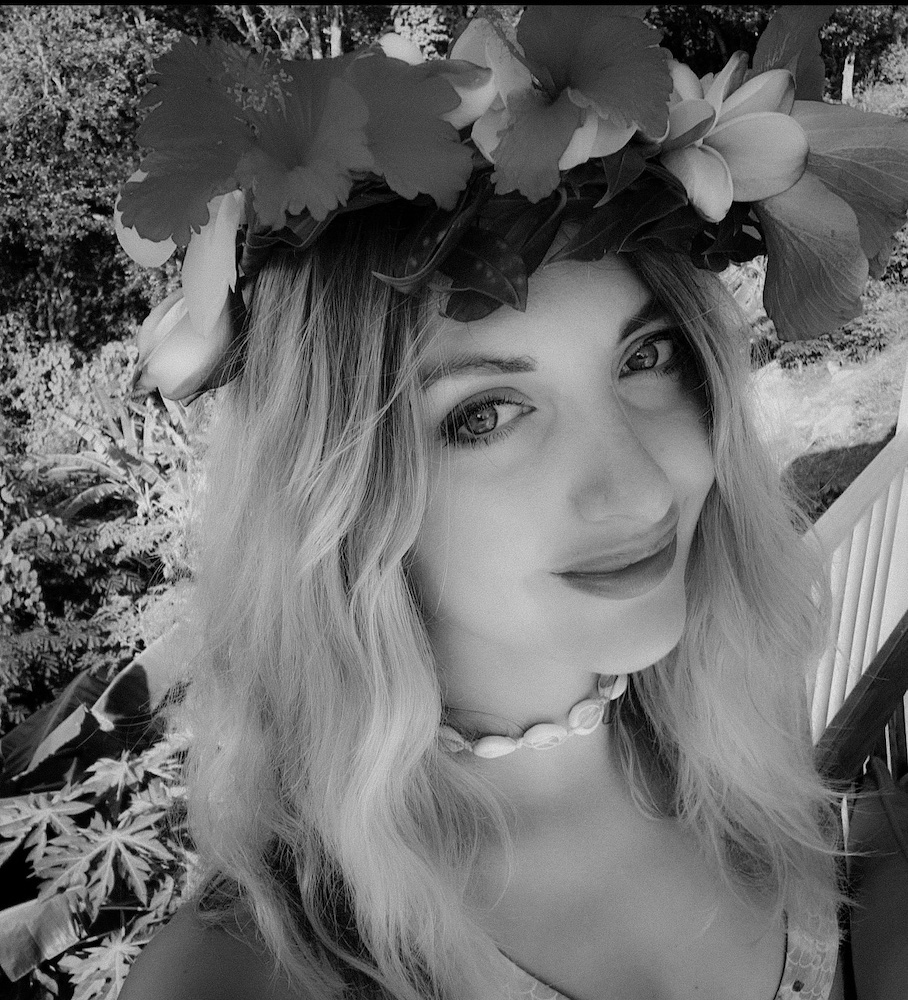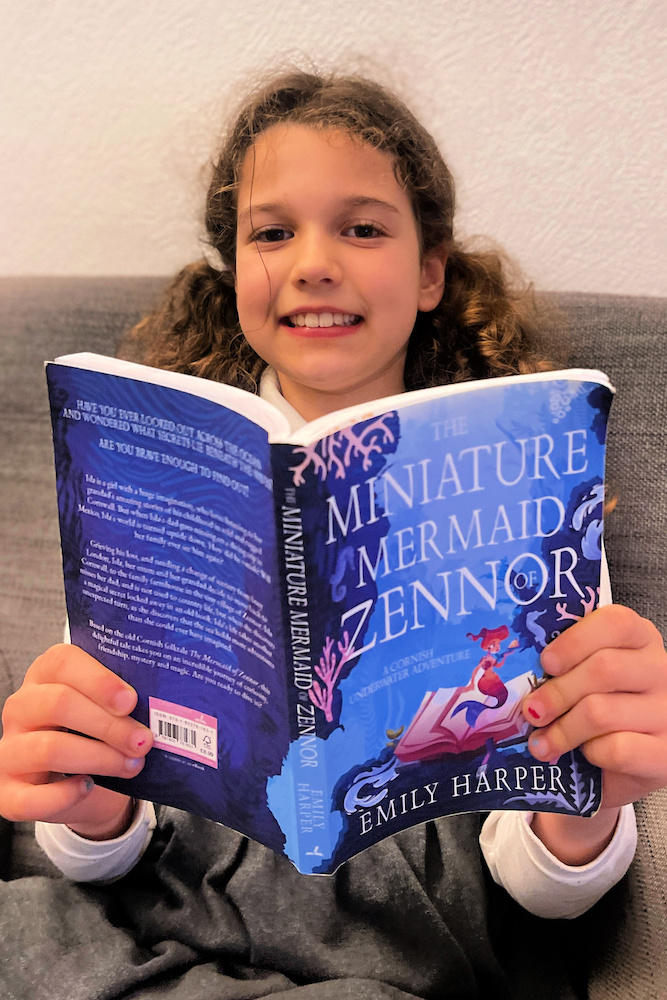A wonderful new children’s book, The Miniature Mermaid of Zennor by Emily Harper, is out today presenting readers with a story based on a magical mermaid folklore tale that is set in our own country – in Cornwall, in fact.
The book centres around a young girl called Isla who lives with her mother in Notting Hill, near her larger-than-life grandfather – a Portbello Road market stall trader, no less – who she is very close to. Isla’s life has been turned upside down after her father disappeared whilst on a diving trip to Mexico. Her mother and grandfather make the decision to move back to the family home in Zennor, Cornwall which requires quite a bit of adjustment for young Isla. However, it is here that she discovers a world of mystery and magic hidden in a cave on the beach and uncovers a secret that has been handed down through generations.
The Miniature Mermaid of Zennor is author Emily’s first book and she intends to expand it into a Miniature Mermaids adventure series – the perfect read for all children aged between 6 to 12 years old. Emily works as a primary school teacher, teaching year 3, and was inspired to base a story around a British tale after realising that primary school children face little exposure to traditional tales and folklore, especially those from this country. The book also features a traditional Cornish song, poem and recipe to help provide a more in-depth introduction to Cornish history to all readers.
Emily has been researching mermaid tales from across the world which will provide a basis for future Miniature Mermaids books. Emily’s aim is to expose children to different cultures, continents, wildlife and landscapes from across the world to help spur readers’ own imaginations. What a wonderful idea!
I had the chance to ask Emily some questions about the book and her work to get a feel for the inspiration behind the story, as well as what Emily has planned next.
1. The idea of a British fairy tale is a wonderful one (I agree there are not many that children are taught/come across), how did you centre on this mermaid-centric tale based in Cornwall for your book?
I grew up on boats and spent most of my childhood in and around the water, which felt like an unobtainable world; so close to touch but a mere stroke along the surface never felt deep enough, I always wanted more. Cornwall holds a magical place in my heart as the landscape is so wild and unforgiving, it is truly inspiring; simply walking along a windswept beach can result in an adventure. I was inspired by the hidden coves and jagged rocks which can be found scattered along the coast in Cornwall and spent many days looking out to sea from my parent’s house over Mawgan Porth beach, wondering about what lies beneath the surface.
Mermaids endeavour to capture my imagination and I like to think that they epitomise freedom and are fiercely female. Cornwall, on the surface, appears to be expensive bolt holes and surfers catching swells, however, if you dive a little deeper you will find an ancient land full of tales, traditions, and mystery.
Cornish people are wildly magical, and I wanted to capture their spirit in my story. Lastly, the simple joy of jumping into any body of water as a child and hoping that just this once you may grow a tail and be able to breathe underwater has always stayed with me!
2. What was the inspiration for the family being located in Notting Hill at the beginning of the book?
I started my teaching career in West Acton, a few moments away from Notting Hill, many years ago; my partner teacher lived just off Portobello Road – I couldn’t believe how lucky she was! London seemed like such an adventure, and like many girls my age, I was entranced by the idyllic streets of Notting Hill from watching the infamous film with a brooding Hugh Grant. These characters lived the life I thought all Londoners lived, in quirky houses, musing over literature. Of course, this was not the case, but it never took away my adoration of Notting Hill.
I have since made my own memories in the colourful streets and would visit Daunt Books and the tiny bookshop just off Portobello Road on my way home from work or during lazy Saturday mornings. I liked to experience the chaos of the market and people-watching filled me with interesting characters to jot about in my notebook.
3. How did you come up with the names of the characters in your book? (Question by Natalie)
I tried to use the names of real people who I have met in Cornwall. My parents had a house there for many years and I found that the locals were so heart-warming, I wanted to keep them in the heart of the story.
My main protagonist, Isla, takes her name from my love of islands and I felt that it sounded traditional yet hinted to her ancestry in Cornwall and the ocean.
The character of Morveren (the creator of all Mermaid colonies) is the supposed name from the folk tale of the Mermaid of Zennor, which was the inspiration behind my story.
4. Can you tell us a bit more about your next book, set in the Seychelles?
I spent a year teaching in an international school in the Seychelles, and although I have lived in other tropical countries in the past, the islands were captivating. I was not sure what to expect when I landed on Mahe island, in the middle of a pandemic and with no idea what my new house, new school or new island looked like. I spent two weeks inside a hotel room (thank you, Covid) with no view of the outside world waiting for me.
Once I was released, I realised that I had been held captive a stone’s throw from one of the world’s most breathtaking beaches. From that moment, I fell head over heels in love with the Seychelles – from the prehistoric boulders cluttering the edges of the island, to the powder-soft beaches.
If I thought that the surface world of these islands was amazing, I had no idea what waited beneath the surface of the Indian Ocean. From my first snorkel, I was entranced! The diversity of sea life is mind-blowing. I saw every type of ray; I watched an octopus change its colours and form in the blink of an eye. I swam with sharks, looked a sea turtle in the eye and escaped some poisonous stings. I wanted to share this incredible experience and highlight the delicate biodiversity of our planet’s oceans.
Despite all the beauty of the Indian Ocean, its future is currently hanging by a thread. Aside from the thousands of tourists who flood the islands, the locals are left to clean up and keep the island held together, they are fiercely protective of their nature. I was lucky enough to be there while flights in and out of Mahe were grounded, so I had the ocean to myself many times. This is rare and habitats on islands like the Seychelles are so fragile that their very existence is threatened daily. Conservation is taught to islanders and foreign residents from when they are children, which means that the mentality of protection is engrained and part of everyday life. I was struck by how passionate the children were about their islands. If I can spread a message of conservation and awe for our oceans, then I feel I have made a tiny difference.
Isla will go on an adventure with her journalist parents (and Grandad) to uncover the world of illegal shark fishing, which is a real threat to our oceans. Isla will meet a new colony of creole mermaids, endemic species, and other exotic sea creatures on her adventure. You can expect greater biodiversity and real issues around global warming and coral reefs will be discussed and will be at the forefront of the plot.
5. How do you combine your writing with teaching? Does inspiration ever strike from something your students say/are interested in?
I learn from my students constantly (that sounds so cheesy, but it is absolutely true!). I get to write with the children, explore books and delve into different worlds every single day, which is more than some adults or children will experience so I count myself very lucky. The children in my class ask endless questions and their curiosity of ‘what if?’ is inspirational, they guide me in our lessons, and I love to facilitate their curiosity.
I am currently working on a novel which surrounds the idea of what life would be like if we had no imagination and we had to pay for dreams. Who would cast the dreams? How would that work? This idea came from one of my students last year who asked me what I thought the world would be like if we didn’t daydream – my immediate answer was that it would be a boring and cruel place to live. I then began to think… wow… this could be something extraordinary!
I think it helps that I am so passionate about the written and spoken word and this rubs off on my lovely students. My class love to bring me pieces of writing and mini novels which they have been working on at home and I find this heart-warmingly lovely.
Thank you very much to Emily for taking the time to answer our questions.
But who better to provide a review on a children’s book than a child herself? My 8-year-old daughter Natalie (who asked one of the questions above) recently finished the book and absolutely loved it – the proof of which is how much she wanted to discuss the story with me, and also her gasps and shouts when she reached an exciting part or an unexpected twist in the book. Natalie says she found the book exciting and would absolutely recommend it to her friends!
The Miniature Mermaid of Zennor is out today, Tuesday 27th February 2024, and can be purchased at book retailers such as Waterstones and Amazon. It is available in paperback and Kindle formats.





